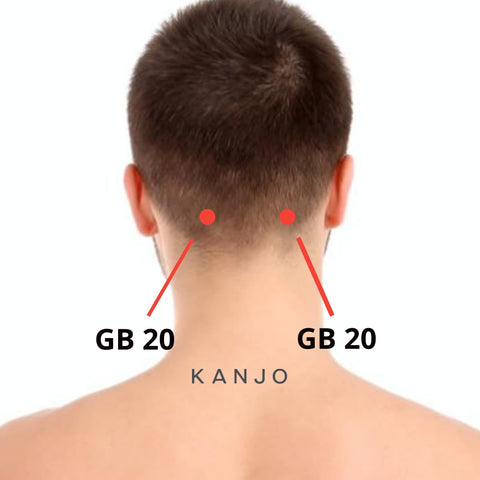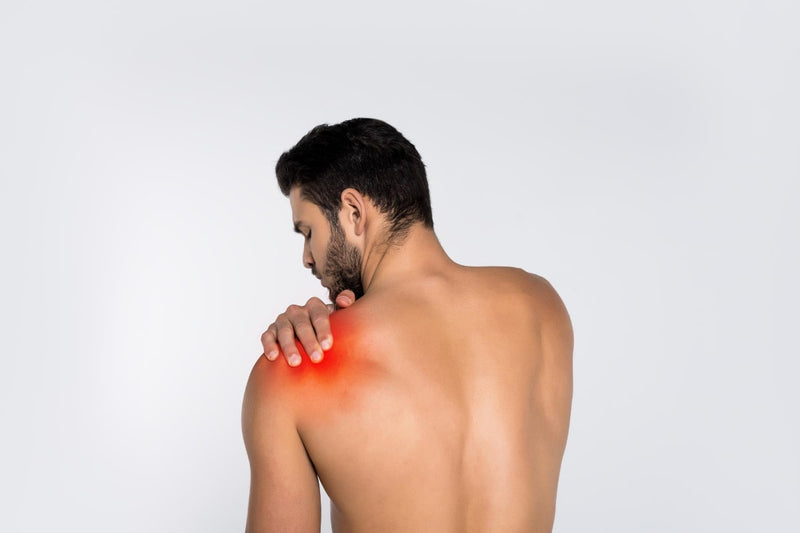Shoulder pain is a common problem that can be very painful and lead to long-term damage to your shoulder joint.
This article will cover shoulder injury symptoms, the various causes of shoulder pain, treatments available, and prevention methods.
Shoulder Anatomy Overview

The shoulder consists of three bones: The humerus (upper arm bone), scapula (shoulder blade) and clavicle (collarbone). These bones are held together by ligaments and muscles.
The head of the humerus fits into a round socket (the glenoid) on top of the scapula. The rotator cuff is made up of tendons and muscles that keep your arm bone centered in the shoulder socket and attached to your shoulder blade.
The rotator cuff is what allows your arm to move freely in all directions. It also helps stabilize your shoulder when you throw or raise your arm overhead. If you have any problems with this area, it could cause pain in your shoulder.
What are the Symptoms of a Shoulder Injury
Shoulder injury symptoms will center around your range of motion and shoulder strength. Look for these symptoms of a potential injury:
- Pain in the shoulder when moving your arms.
- Difficulty lifting your arm above your head.
- Tenderness around the shoulder joint.
- Shoulder muscle spasms.
- Loss of strength in the shoulder.
- Numbness in the shoulder, arms, hand or fingers.
Potential Causes of Shoulder Pain

There are several causes of shoulder pain and sometimes it doesn't have to be any direct injury to your shoulder to feel pain.
As we get older, our bodies start to wear down and become less flexible. This leads to more injuries like arthritis, tendinitis, and other conditions which can make us more prone to shoulder pain.
Common causes of shoulder pain include:
- Arthritis - Common cause of shoulder inflammation and swelling.
- Rotator Cuff Tear - Tears in the rotator cuff tendons can cause pain in the shoulder.
-
Bursitis - Inflammation of bursae under the skin that cushions joints.
-
Strain/Sprain - Sprains and strains occur when the ligament(s) holding one part of the body in place gets stretched beyond its normal limits.
-
Osteoarthritis - Osteoarthritis is a condition where cartilage becomes worn away in the joints causing them to rub against each other.
- Sports Injuries - Athletes can suffer rotator cuff tendinitis and tears from sports that require lifting their arms over their head regularly. Common sports include swimming, baseball, and tennis.
- Pinched Nerves - Pinched nerves in the shoulder or neck can cause numbness, tingling, and pain in the shoulder.
- Dislocated Shoulder - Dislocation occurs when the ball-shaped end of the humeral head separates from the glenoid cavity.
- Frozen Shoulder - Also known as adhesive capsulitis, shoulder joint tissues thicken and tighten, resulting in a limited range of motion.
Shoulder Pain Home Treatments
Treatment options can vary depending on your shoulder pain severity, and whether it's acute or chronic shoulder pain. For mild to moderate cases of shoulder pain, there are a number of home treatments available.
1. Stretching and Exercising
If you're experiencing shoulder pain due to an injury, stretches and exercises targeting your shoulder muscles and rotator cuff tendons can help relieve the pain.
Stretches and exercises may also prevent future injuries by improving flexibility and strengthening the muscles surrounding the shoulder.
2. Short Term Rest
Resting your shoulder for a few days after an injury will allow your body time to heal.
Rest should be combined with cold and hot treatment for initial treatment.
3. Hot and Cold Treatment
Cold therapy (ice packs) can reduce swelling and inflammation. It may also provide some relief if you have minor muscle spasms.
Heat therapy (heat pads) can increase blood flow and relax tight muscles. It may also provide temporary relief if you
For acute shoulder pain, start with putting an ice pack on the painful area for 15 to 20 minutes. Ice your shoulder 3 to 4 times a day for the first 2 to 3. Afterwards, you can use heating pads to relieve soreness and circulation.
4. OTC Medicine
Over The Counter (OTC) medicine can offer short-term relief by reducing inflammation and relieving shoulder pain. Common nonsteroidal anti-inflammatory medications (NSAIDs) include ibuprofen (Advil) and Acetaminophen (Tylenol).
Be careful not to take NSAID medications long-term, because they can lead to stomach ulcers and other problems.
5. Acupressure Therapy
Acupressure has been shown to improve shoulder pain. It involves applying pressure to specific points on the body using your fingers, thumbs, or elbows.
Pressure points for shoulder pain include:
- Gallbladder 20 (GB 20) - Located at the base of your skull on the left and right sides.

- Gallbladder 21 (GB 21) - This acupressure point is found on both shoulders. It's halfway from the shoulder to the base of your neck.

- Large Intestine 10 (LI 10) - Located on the outside of the forearm when the arm is bent 90 degrees. It's 3 finger widths below the elbow crease.

- Triple Energizer 3 (TE 3) - Located on both hands in the crease between the fourth finger and pinky.

- Luo Zhen - Also located on both hands. This pressure point is in the groove between the second and third fingers.

Acupressure products that can help apply pressure and massage the pressure points include tools like the Kanjo Acupressure Ball and Kanjo Acupressure Mat.
6. Improve Posture
Poor posture can cause shoulder pain, so improving your posture will help relieve shoulder pain. Try to avoid slouching while working at a desk. Strive to sit upright instead of slumped over a computer screen.
If you work at a desk all day, consider getting a lumbar support pillow to keep your spine straight. The Kanjo Back Pain Relief Cushion is a good option.
Try to sleep on your good side as well, rather than on your bad side or back.
7. Avoid Demanding Activities
Avoid activities that are too demanding for your shoulder. If possible, try to find something less strenuous to do. For example, if you're looking to play sports, make sure it doesn't involve throwing or catching a ball.
If you must perform these activities, be sure to warm up well before starting and cool down afterward. You should also stretch out your shoulders before and after playing sports. Stretching exercises can help loosen up stiff muscles and prevent injury.
When to See a Doctor or Specialist

If you have an acute shoulder injury that is causing intense pain, you should see a doctor or specialist. For shoulder pain that lasts longer than 2-3 weeks, you should also see a doctor.
Your doctor will conduct a physical examination to determine what caused your shoulder pain. They may order tests, such as X-rays or MRI scans, to rule out any underlying conditions. Your doctor may recommend additional treatments, including physical therapy, injections, or surgery.
Specialized Treatments
There are various types of specialized treatment available for shoulder pain. Some people prefer non-invasive options, such as acupuncture, chiropractic care, massage, exercise, and self-care techniques.
Others choose more invasive treatments, such as cortisone shots, steroid injections, or arthroscopic surgery.
1. Surgery
In some cases, surgery is necessary to treat shoulder problems. Surgery can correct structural issues, remove damaged tissue, or repair torn ligaments.
For the majority of shoulder pain cases, however, surgery isn't necessary. Be sure to consult with your doctor about whether surgery is right for you.
2. Physiotherapy
Physical therapists use specific exercises and other treatments to improve function and mobility. These therapies can help restore range of motion and strength.
Physiotherapy will help relieve pressure on the shoulder joint by stretching and strengthening the surrounding muscles. It can also reduce inflammation and promote healing.
3. Steroid Injections
A steroid injection (corticosteroid) is a strong anti-inflammatory that can provide temporary relief from shoulder pain in the short term. This type of injection works by reducing swelling around the affected area and relieving muscle tension.
It's important to note that this treatment has risks associated with it. Talk to your doctor about the benefits and risks of using steroids to treat your shoulder pain.
4. Prescription Pills
A doctor can prescribe medications that are stronger than OTC medicine to reduce inflammation and shoulder pain. There are a number of different prescription pills available, including opioids (Oxycontin), hydrocodone (Vicodin), and other muscle relaxant options.
Prescription medications should be taken under doctor supervision because of the risks involved. Some side effects include the potential for addiction as they can be habit forming.
How to Prevent Shoulder Pain
Preventing shoulder pain requires taking steps to avoid injuries and to maintain good health. Here are some key tips to avoid shoulder pain:
- Warm Up and Stretch - You should always warm up before participating in activities. Make sure to also stretch before and after exercising.
- Avoid Excessive Movement - When playing sports, don’t swing your arm too hard or lift heavy objects.
- Recovery Time - Make sure to give your shoulders time to rest and recover. Ice can help reduce swelling.
- Keep Active - Exercise regularly to strengthen surrounding muscles, prevent injury, and keep your body fit.
- Proper Posture - Proper posture helps protect your back and shoulders. Avoid slouching when sitting down.
- Avoid Over Training - If your shoulder is sore or in pain, don't continue the activity and make the pain worse.
Shoulder Pain Final Thoughts
Shoulder pain can be quite painful. However, there are many ways to treat shoulder pain without resorting to surgery. With proper exercise and care, most people can get better results with non-surgical methods.
If you've been experiencing shoulder pain for a long time, talk to your doctor to diagnose the reason and come up with a treatment plan.
Sources:
- AAOS: https://orthoinfo.aaos.org/en/diseases--conditions/shoulder-pain-and-common-shoulder-problems/
- Healthline: https://www.healthline.com/health/chronic-pain/shoulder-pain
- Penn Medicine: https://www.pennmedicine.org/for-patients-and-visitors/patient-information/conditions-treated-a-to-z/shoulder-pain
- WebMD: https://www.webmd.com/pain-management/why-does-my-shoulder-hurt
- Dignity Health: https://www.dignityhealth.org/conditions-and-treatments/orthopedics/common-shoulder-injuries-and-conditions/
- Family Doctor: https://familydoctor.org/shoulder-pain/

